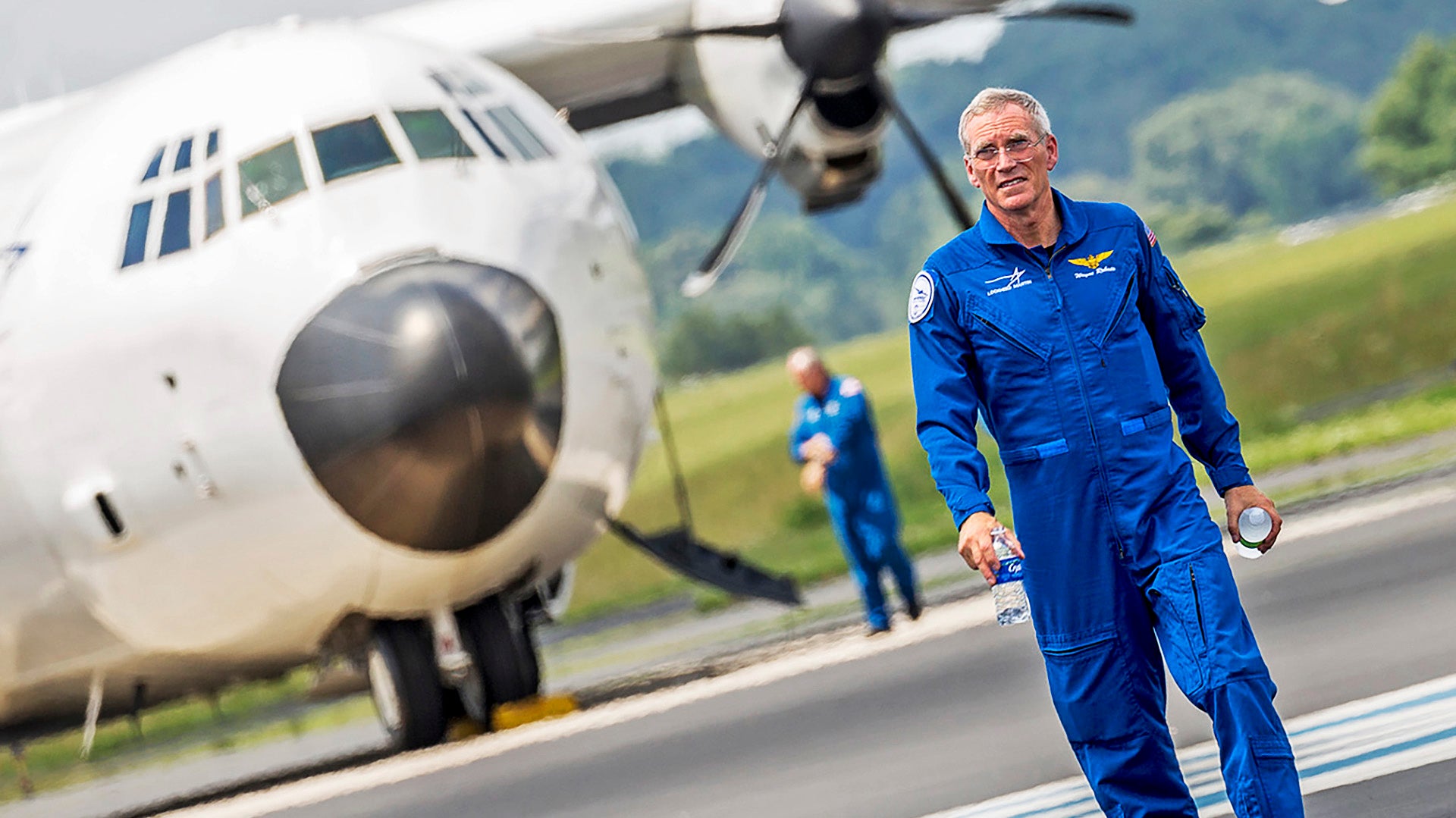Lockheed Martin’s C-130 team stormed into the Farnborough Air Show in England with their new LM-100J commercial variant of the iconic and super versatile Hercules. The LM-100J display, flown by veteran Lockheed test pilot Wayne Robers, stole the entire show. During the routine, Roberts pulled off quite the spectacle, looping the airlifter right in front of the crowd. The second video of the routine was available The War Zone posted it and it went viral around the globe.
Now we get to hear all about this historic air show routine, including how it became a reality and how it was flown, by Wayne Roberts himself. And that’s not all, we also talk test pilot flying, memorable moments in the cockpit, favorite aircraft, and everything C-130 with the soon to retire master pilot. As a bonus, we also get to pick Lockheed’s Vice President of Business Development for Air Mobility and Maritime Missions Tony Frese’s brain about LM-100J and what’s in store for the Hercules in the decades to come.
So buckle in, it’s going to be a wild ride, and start off by watching these videos of Wayne’s awesome air show routine:


Tyler: Wayne, you’re the only pilot in the world who holds an aerobatic card for the C-130. What went into obtaining something like that? I didn’t even know such a qualification even existed!
Wayne: Yeah, okay. So, I have to say, I’m not sure I knew either until I started going into it. Years ago, the FAA decided they needed to regulate for safety purposes airshow pilots. They needed to make sure they were safe to do air shows in front of the public. They did a really smart thing. They delegated it through the international council of air shows, and they’re really the group of professional air show pilots that get together and help each other out. So, the international council of air shows, I contacted them.
I started getting the statement of aerobatic currency, which is what the FAA calls it, in 2009—I got the first one with the C-130J team, I did Paris [Paris Air Show] that year. I also updated it in 2010 and then I did it again for this show.
So, what it is is it’s a bunch of air show pilots that are very senior and they had the responsibility to evaluate other air show pilots and then recommended the FAA that we can do a routine in our airplane. So, since I chose the C-130J as my airplane, my statement of aerobatic currency competency is for all models of the C-130.
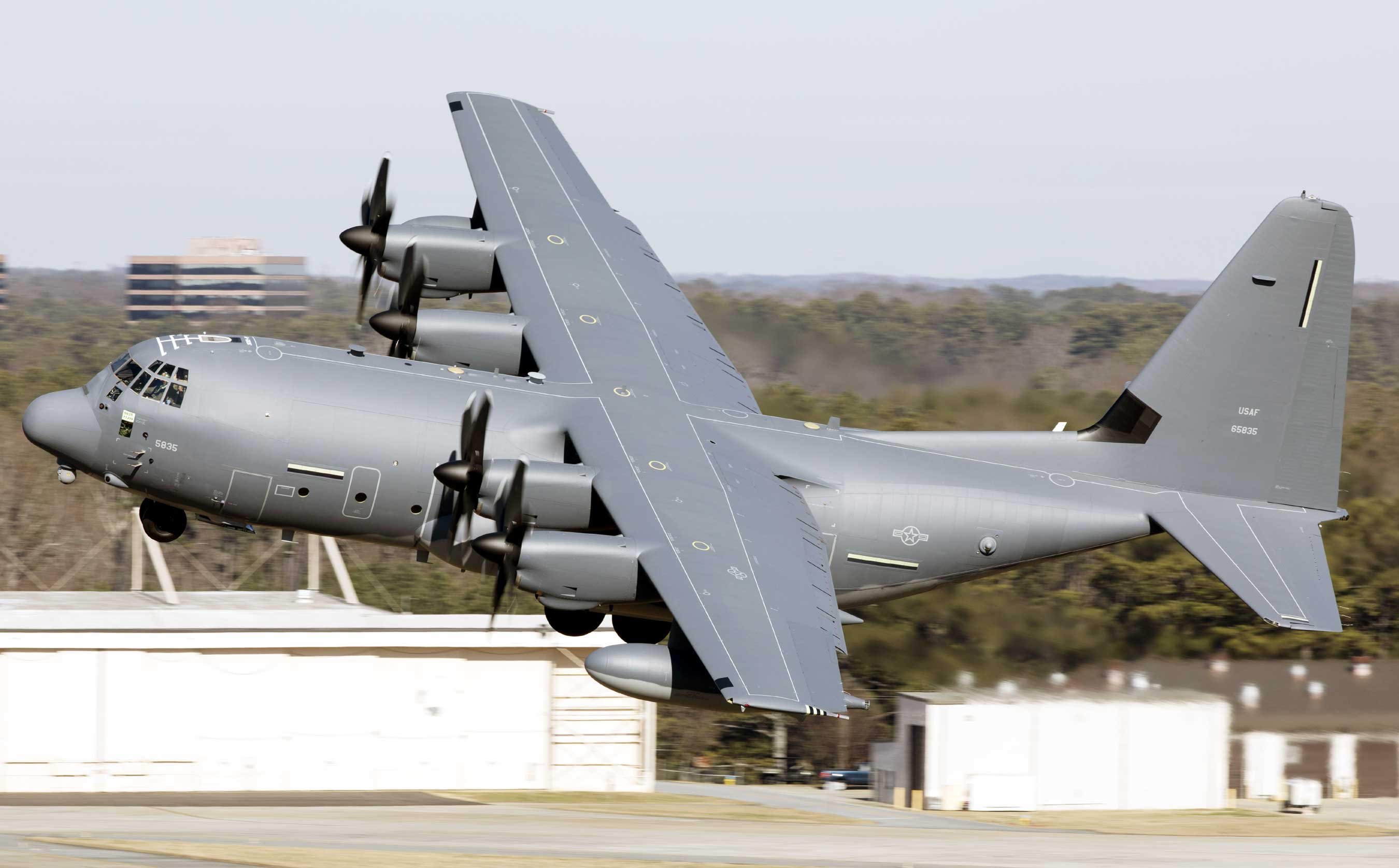
Tyler: Were you surprised by the reaction that you received after you did your latest routine at the Farnborough Air Show in the LM-100J?
Wayne: Yeah, I certainly was surprised at the extent of it. To me, I’ve done the shows since 1998, and I’ve just been slowly making the shows better and showing off more capability of the airplane. To me, this was a small step from my last show, which was actually in 2011. We didn’t have a reason to do another show for a few years, because we didn’t have another new airplane to market like the LM-100J. But to me, it was a relatively small adjustment, but what I did is I shifted the show to the center and then created a little bit more of a loop, and it certainly seemed to make the difference.
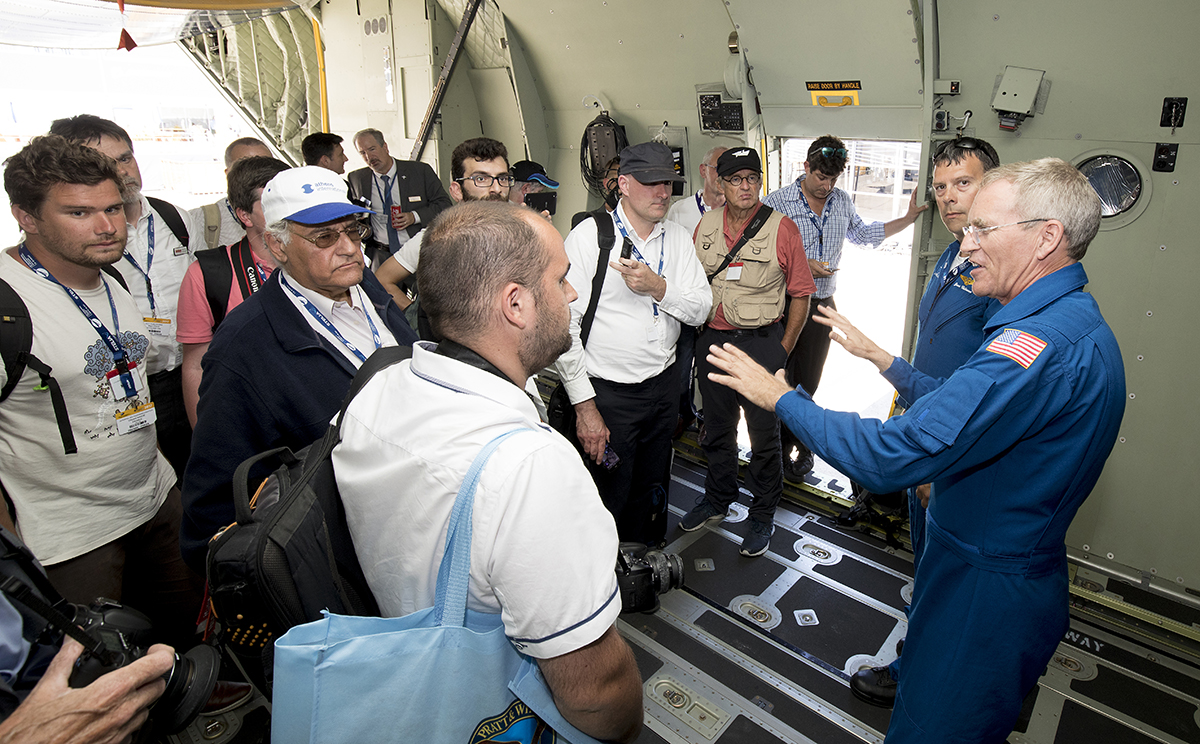
Tyler: Oh, it sure did. No question about that. Now, as far as that loop and planning the routine to execute that particular maneuver, what was that like? What all did it entail to make it happen?
Wayne: Well, okay. Again, I’ve been kind of a professional air show pilot, essentially, for the last 20 years, so I’ve worked into a very methodical process to create a show. I always create a little different show. I always make it a little bit better, change it. To create the show and then to perfect it and then to perform it. So, let me talk a little bit about those steps.
First of all, I know an awful lot about the airplane. I started flying four-engine turboprop P-3s 41 years ago, and I’ve been flying steadily ever since. I flew the Navy P-3s and then I went to test pilot school, became an instructor at the Navy Test Pilot School in turboprops and handling qualities and performance in big airplanes in the early ’80s. Then I joined Lockheed and worked for almost 30 years at Lockheed, I’ve been testing big airplanes, mostly big turboprops.
In the C-130J, I’ve done everything with it… I was back there in the trenches doing the development work in the ’90s, and I pretty much got a chance to do every good flight test there was, from all the stalls, the side-slips, to all the engine out work. So, I really know how the airplane performs and handles, so it was a good background to slowly put the show together.
All right, so in this particular show, I made changes, and I kind of inverted the show to create this loop maneuver right in front of the crowd. One of the reasons I did that is because the airspace has gotten so tight because of prior accidents and risk mitigation. They really don’t want you to go upside down or into unusual latitudes at Farnborough now except right on a narrow little slip of the field in front of the crowd.
So, it was a perfect excuse for me to invert my show. Instead of doing stuff on the side, most people do stuff on the side, high up, and then zoom past the crowd in the middle, and kind of this figure-eight type thing. This gave me the excuse to come in and do the maneuver right in front of the crowd, which just showed it off. I was doing similar maneuvers before, but it just didn’t show it off, what I was really doing, until you put the loop really right in front of the crowd. So, when I decided to do that, then I finalized the routine.
It took me about a month and a half of two or three hours every night in the simulator for about a month and a half to put this show together, head up, head up down displays, and then I did it about 120 times, just to give you an idea of what it takes to get precision in a show like this. I performed the eight-minute show about 120 times in the simulator.
By then, I had a very, very repeatable show. We have all this flight test and simulation data that we can put together. I can see how the airplane flies in three dimensions after I fly it in the sim, and we put these multiple shows together, and I was going through the exact same space in three dimensions, and in four dimensions in time over and over again. So, with that kind of precision, now you have actually a safer show because all the way through the routine I know exactly what I’m supposed to be seeing. And if I’m not seeing the airspeed and the altitude and all these checkpoints all the way around, then I can make small corrections, or I can check if the airplane’s not performing right.
I only need a few show practices in the airplane, because I know the airplane so well, I know the simulator so well, that there are only a few things I check to make sure that the performance in the airplane is not too much different. So I only ended up doing three practice routines, 120 in the simulator, three in the airplane, and I was ready to go.

Tyler: As far as, what do you call it? Is it a loop? Is there a special name for that maneuver that you came up with for the maneuver?
Wayne: You might be a great candidate to come up with a good name! Let me tell you what it is.
It’s pretty close to a loop. Let me explain what’s different about it. This is something I also want to comment on. The routine and practicing it is one thing and putting it together. To actually convince the FAA, the CAA [Civil Aviation Authority] in Europe because it’s flown in Europe, and the Flying Control Committee in Farnborough, that it’s a safe show is a whole other thing. I know it’s safe, but I have to convince everybody.
The statement of aerobatic competency is one piece of it. We had the airplane structurally analyzed by our engineers who are also FAA engineer representatives, so the airplane was analyzed in detail to be able to do the show with no overstress whatsoever. And then, of course, we record everything the airplane does and look after each show. All that has to happen.
The other piece of it is that I treat it just like any other transport mission in an FAA sense. We look at every single point failure that can occur during the air show, and if I’m not happy, and the FAA would not be either, if any single point failure, and I don’t care what the probability of the single point failure is, any single point failure would result in there not being a safe recovery.
I worked through every engine failure at every moment of the show, even when I’m almost upside down. I look at all four engine failures one at a time. I come up with what I’m going to do with the HUD [Heads Up Display], what I’m going to do with the rudders, and the ailerons, the escape maneuver that gets away from the crowd, whether I lose my Heads Up Display, the Heads Down Display, or any other system that’s a single point failure is all analyzed. And of course, we do this anyway for all missions. These are the things that enter my head anyway, but we apply it to the show.
Now, I say all that because I inclined the show at the loop 20 degrees, and that’s why it’s not quite a loop, but I do that for safety purposes. It actually gives me more options to get out of an engine failure than a straight loop. But it’s a minor difference from the crowd point of view, and the way I do the loop, you can’t see the 20 degrees bank much, so it’s a little bit of an optical illusion but not much.
So, what I do is instead of just pulling straight up, I roll the 20 degrees angle of bank, and you can see that in the video, and then I pull straight back. The airplane goes up to about 70 degrees nose up instead of 90, and then over the top, instead of 180 degrees angle of bank, I’m at about 150 or so. It is a loop. It’s just a loop inclined a little bit because it gives me better escape maneuver capability for any kind of a failure.

Tyler: Well, I think we need to call it the Wayne Loop. I think that’s just the answer right there!
Wayne: That’s fine. That’s fine with me!
At the end, I kind of scoop it out in a little bit of a corkscrew, but by that time you’re three-quarters of the way around the loop, everybody’s satisfied. Nobody cares what happens that last quarter of the run.
Tyler: As far as those maneuvers in your routine, including the loop, are they something that we’ll see in future C-130 demos, whether it’s one by the Air Force or maybe even Fat Albert?
Wayne: Well, I don’t know the answer to that question. Everybody that flies one of these airplanes has a boss and has an owner of the airplane, and those people that make those decisions will have to address that. I think in this particular case, I certainly had all the background to put the show together, although the show isn’t all that difficult to fly if you do it exactly like I did, but to have all these escape maneuvers and that sort of stuff, it’s going to take a bit for other people feel comfortable with that.
The other piece of it, of course, we had the engineering analysis within Lockheed to make people comfortable with that, so another customer that has this type of desire to do it, I believe they’re going to have to go through the same steps. I’m not sure how hard it’ll be for them. But let’s face it, I say that to everybody, the airplane did it, it wasn’t just me, obviously. Somebody else could do it, and it’s not that hard a show to fly. It was a lot more effort to put it together and to make sure that I knew what I needed to do to keep it safe.
Tyler: Right, a team effort there more so than just jumping in there and flying a demo.
Wayne: Exactly.
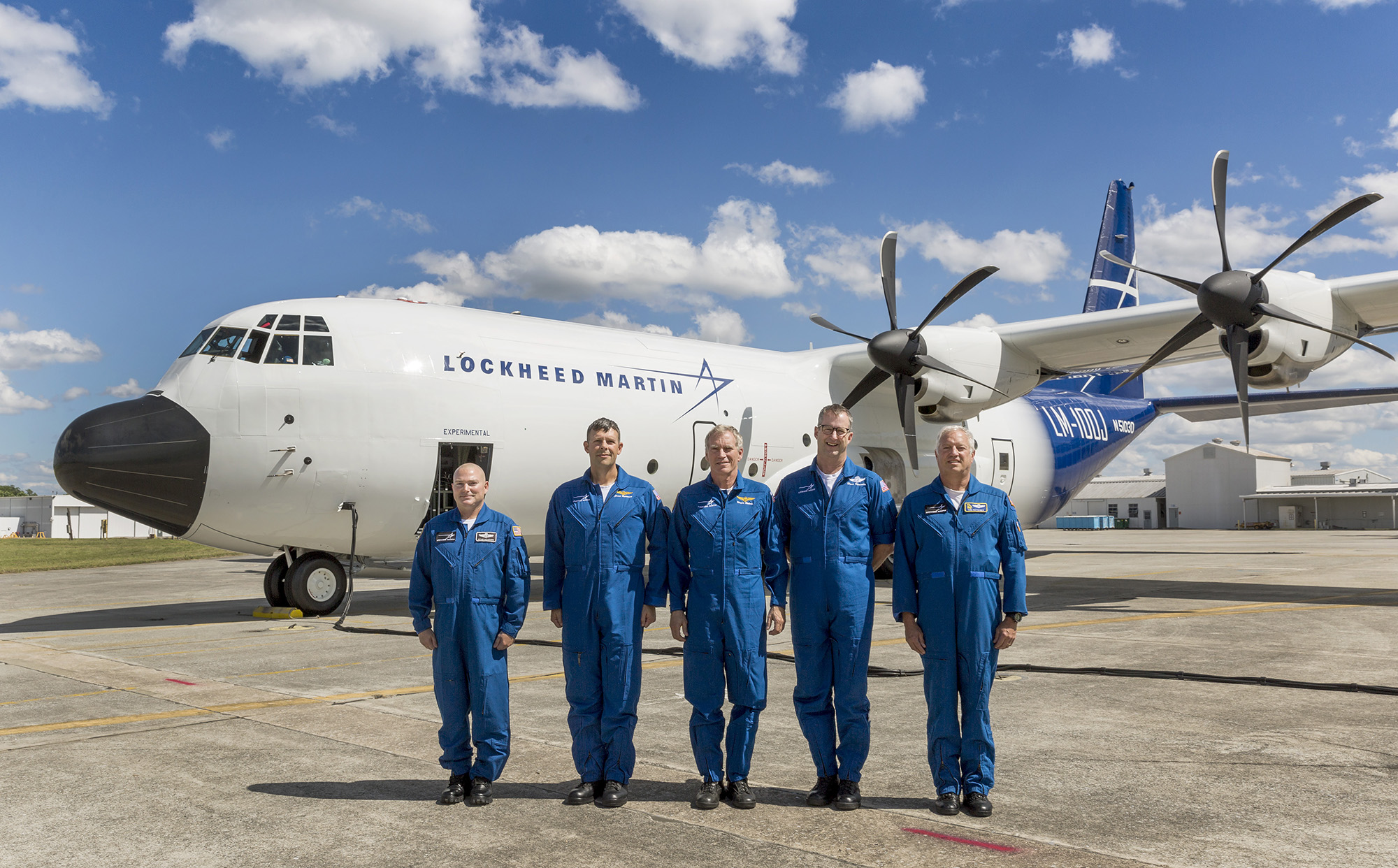
Tyler: What does the LM-100J bring to the table, and how do you think it will be received by the marketplace once it’s out there and flying commercially?
Tony: I think it will be received very well. Based on some of the initial conversations we had with some existing users of the C-130 in the commercial marketplace, they love the airplane. It’s a very unique airplane that there’s really not anything else out there that can do what it does of its class and its size, and they’re anxious to obviously see the next generation come to fruition. Frankly, the older ones, they’re built so well, they’ve got a lot of longevity on them, so we’re working closely with them on transitioning them over to the new model as quickly as it makes sense. The old ones are still performing well for them, but I think they are ready for and anxious to see the latest version of the Herc.
Tyler: How does the new C-130, the latest J model that’s coming off the line, differ from the C-130 that we grew up with? Like the H model and the E model. What are the major differences?
Wayne: The design of a straight wing turboprop is very efficient across a wide range of airspeeds and altitudes, and that’s why it does so many missions so well. What’s changed is cost of ownership, in the sense that it’s a two-man crew instead of a four- or five-man crew, because there’s so much automation. The engines have more thrust. The takeoff distances are shorter. It can go faster and carry more. It’s all CNS-ATM compliant. The LM-100J has every update required to meet all aerospace requirements around the world now with data-link and RNAV LTV minimums approaches, and there may be some legacy C-130s that have gotten some upgrades to get some of that, but all of that’s in there.
It’s much easier to plan missions. There’s so much automation in the airplane which the legacies [C-130s] did not have. The pilots are really there just to change the missions and routes, so even the civil guys can plan multiple legs, multiple short landing fields, airdrop is still a possibility—certainly has always been in the civil side as well as the military. Airdrop capability is probably second to none of any airplane in the world in terms of accuracy and capability of airdrop, and all that can be planned on the ground and executed much better than it was in the past.
Basically, a two-man crew can perform more accurately and safer than a four- or five-man crew could in the legacy airplane. The J was completely a digital transformation entirely, so every aspect of the airplane in terms of operation and maintenance has been up-tuned.
Tony: Yeah, I think from my perspective, what I promote to our customers is we stripped out a lot of the old mechanical parts, replaced it with an all-digital backbone, and that equates to almost doubling the reliability of this airplane. Powerplant, all-new powerplant obviously gives us 20% more fuel efficiency. All that translates to about a 30% savings in operation support costs using this aircraft compared to the legacy. So, combined with its performance enhancements, frankly, a lot of design drivers that went into the J were really driven by how do we save operational support cost.
Wayne: Right, and I think that’s been demonstrated not with our data, but with actual customer data, that we validated 30% cost savings.

Tyler: What does a C-130 look like in your in 2050? Where do you see the C-130 going in the future, and how is it going to adapt even more to accommodate new mission requirements and emerging threats in the coming decades?
Tony: We talk about that a lot. I think obviously what’s going to drive that a lot is economics, and we’ve stayed tried and true with the J as we’ve developed it. We’ve upgraded certain systems. We’ve been very thoughtful about that. I think if you’re looking forward to C-130 in the future, I think it’s going to look very similar, with some technology upgrades to address either obsolescence or maybe some performance enhancements we still want to see on the propulsion side in order to get a little bit better range or fuel economies.
Then maybe whatever the latest technologies are for the flight deck, whether it be display technologies or we may want to take some incremental looks at some of the control panels we have on the airplane and streamline some of that with some of the latest touch panel technologies.
So, I don’t see it as transformational. I see it more as evolutionary, just to make sure that we continue to retain the proven nature of the platform, the reliability, and of course the cost-effectiveness.
Wayne: I want to mention the firefighting mission for example, we do have a great platform that’s very efficient across all these speed ranges and altitude ranges, and for some reason, we can make guesses, the competition has been held at bay, that nobody’s decided to go directly at this and create an airplane that can do what this airplane can do. So, we’ve got this modern airplane that has a range of missions that it’s the best at, but I think we’re going to continue to make those missions more efficient. So I think there’s going to be a lot of work on the mission portion… As Tony said, a little evolutionary in a sense in terms of performance and some of those things.
One of them is the firefighting mission, where I think there’s been a lot of data recently that says we need good firefighters in mountains, and this airplane’s great for that. But we need to be able to do it in more weather conditions, night and smoke and so forth. There’s so little time available where a current visual firefighter can operate, and most of the time, the fire’s burning and you can’t go do anything because of either smoke or darkness. I think our airplane, with a Heads Up Display, its primary flight display, and other technology that’s out there, might be able to make it an extremely more efficient firefighter, for example.
Tony: I guess to my point, we’re not going to try to become something we’re not. We’re not going to overcomplicate the airplane. We’re going to do what we do well, and we’re always conscious of the cost, the price of the airplane, the support operational cost, to remain ultra-competitive. We know we have other folks that are pushing their products as well and saying they can do the same things we can, which to Wayne’s point earlier, our design really lends itself very well to tactical roles, and I think the other designs are always some level of compromises when it comes to that.
So, we’re going to stay very focused on making sure we’re price competitive in the market, unless we get some other customers that really drive some unique developments on the airplane. And I frankly think, as you look outwards the 2030, 2040 timeframe, I think Air Mobility Command will certainly start to give us indications, even well before that, of what the next generation tactical airlifter will need to be. And then we’ll start putting our attention toward that design, which is likely to be different than what we’re looking at in a C-130.
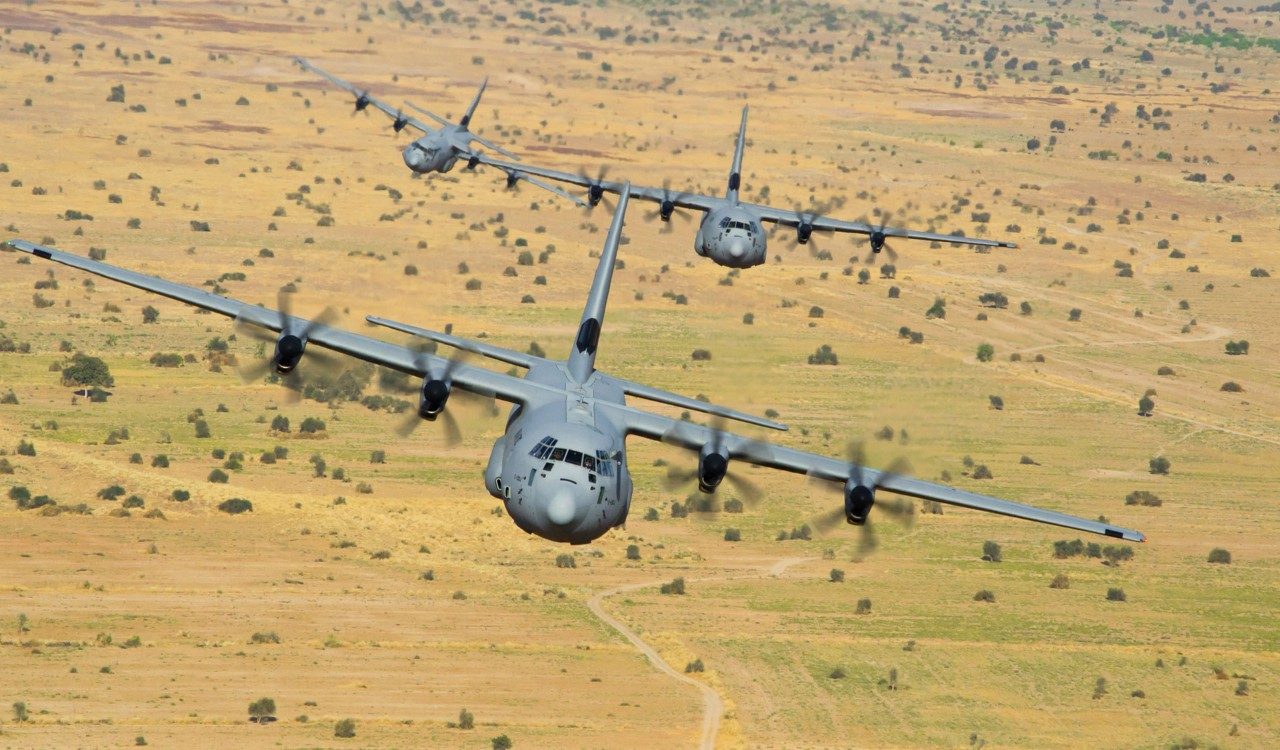
Tyler: We’re fascinated with the C-130’s historically uncanny ability to adapt to different mission sets and all the unique configurations that have been built or even just imagined. Is there a variant of the C-130 that never ended up being built that you like?
Tony: I’ve got one, and it really intrigued me when I was back in college. I went through engineering school and picked up a report on a C-130, it was called HOW, Hercules On Water. They built a radio control model of a C-130 that had big floats and sponsons on it so that it could land and take off on water. They never built it, but they did build this radio control model and actually flew it, and I was just intrigued by that design.
Author’s Note: I actually wrote a profile on this exact obscure Hercules variant a few years ago that was massively popular, you can read it here.
Wayne: Very good, very good. Hey, Tyler, so I have one I actually worked on it for a while, that I was really intrigued with. There was a Navy admiral not that long ago, maybe about 10 years ago, that was convinced that sea basing was the best way to go for the next capability. What he meant by that was we may not be able to base our aircraft, our a supply base, near the battle, and that we ought to have a capability of basing a supply base on water, with a big ship, and ships apparently are fairly inexpensive to build, big ships in a sense, in the big scheme of things.
We know how to build those big ships. The piece that was required was the air link that we’d get from this, almost a floating island perhaps, of military equipment to the shore. He was convinced that the Herc was the right airplane for that, because in the big scheme of development, ships were cheap, airplanes are very expensive to develop. So, if you had to develop an airplane for that mission, it would be hugely expensive. If you could use an existing airplane and develop the ship to match the airplane, you could do it more cheaply, and he was convinced that the C-130J, with its fairly modern capability, was the right airplane.
So, I worked on that for a while, and I think we had some really good solutions to safety problems around the ship. We have this automatic thrust control system that’s already in the airplane [currently operational in the C-130J] you may already know about, that I worked on an awful lot, where the outboard engines being turboprops, digitally controlled through the mission computers, are actually part of the directional stability of the airplane. When one engine fails, the other one pulls back real quickly, because we didn’t make the rudder bigger. That system would help in that environment, as well as I looked at maybe some very capable, safe, solid fuel, JATO type of that kind of technology, to fire only if you need it at all… to make very safe landings. So, if you want to put a whole bunch of people on this plane and try to take it off the boat, then you have to be really safe.
So, we worked on a number of those types of ideas, but it didn’t go very far.
Tony: I got one more that I think was actually really cool. It was a boom tanker version of the C-130 that we actually did wind tunnel tests on. We put a refueling boom on the airplane, and we thought there’d be a market for it, with some customers that couldn’t get their hands on KC-135s or KC-10s or other boom tankers. We felt like we could have a boom variant on the C-130… We took it to the wind tunnel, we did one tunnel test, I have a model on my desk, probably have the only model of the C-130 with a boom on it, and it’s very interesting.
We ended up not building it because the way the aft [rear] design of the airplane is it creates some turbulence back there that the boom would get a little bit finicky as it tried to drop from its stowed position down to fully extended.
If we threw enough money at it, we would be able to make it work, but we didn’t think there was going to be enough of a market to justify that investment, so it never went anywhere, but that’s another cool one. I don’t think anybody’s seen that.

Tyler: What makes a good test pilot and what makes a good instructor test pilot? That seems like an extremely challenging job.
Wayne: In my case, I guess it’s 41 years. I don’t know how else to put it. I’ve been learning … I still am just amazed. I think almost every day I’m at Lockheed I’m still learning things, that there’s just no end to what you can learn about even the same airplane. Okay, so let me break this down.
I really think, first, knowledge about the airplane itself, and then because a lot of times a test pilot will just go out and execute standard tests that you learn at test pilot schools. First of all, professional test pilots get trained at a test pilot school, and you learn standard test techniques and that sort of stuff. On the military side, you’re being trained by these military test pilot schools, their job is to just go test the product and see what’s wrong with it and report it, and that’s about as far as the test pilot instruction goes. I’ve only spent about four or five years doing that in the Navy, and then I jumped ship after 12 years and joined Lockheed, and I’ve been a Lockheed test pilot for 29 years—a very different environment as a contractor or working for a company developing an airplane than as a customer just checking the product.
What makes a good test pilot on the contractor side is really getting to know the airplane and how it’s put together and how you can make changes and working every single day as a team with the engineering group. The more you can understand, in order to fix an airplane, you got to understand how you can affordably fix it.
One of the problems with just an evaluation is it throws these problems over the fence, and then nobody knows. It really helps for the test pilot to actually help come up with the solution. So, it’s really being able to get really close and work together as a team with the engineers and understand exactly how your airplane’s put together, where things are done in the airplane—whether it’s some software or hardware—and then help create the solutions… I think test pilots are uniquely positioned to know what he really wants, but he’s also, because of that, if you understand how the airplane’s put together, he’ll also be very influential in coming up with the best solution.
So, that’s really what makes the best test pilot.
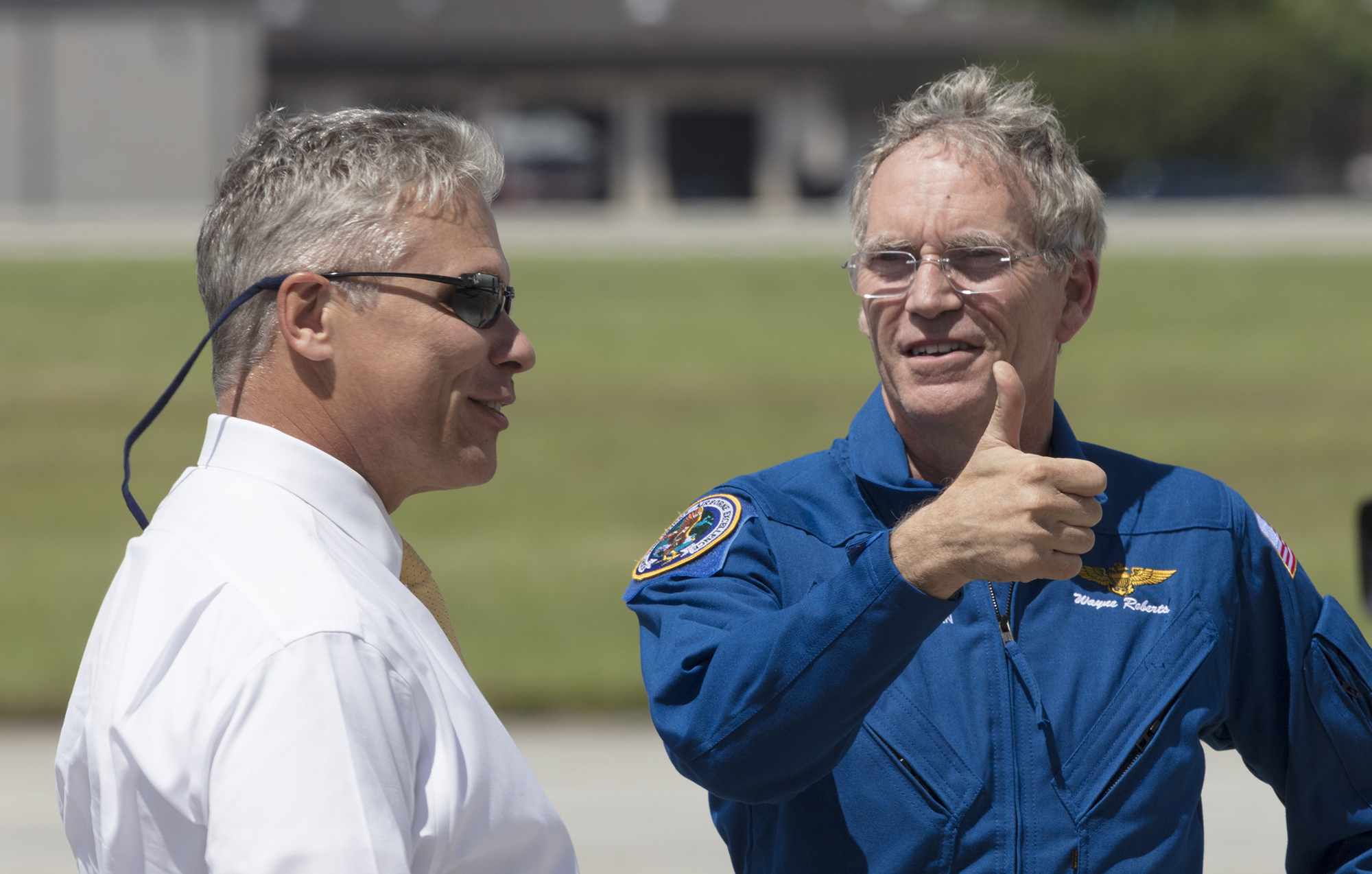
Tyler: What’s your favorite aircraft you’ve flown and why?
Wayne: Well, I have to say that the one that I contributed the most to, and therefore, kind of just a favorite is certainly the C-130J. I got on the program fairly early in the concept stage of this great digital, modern, overpowered C-130J and I got to go through all those steps that you would do… And all the flight paths and all the challenges that go with developing a new airplane… I have to say that it was the best part of my career.
Your first airplane is always great. The P-3, I loved flying that all the time. It’s the best airplane for that mission. And I actually operationally flew that airplane in some very challenging areas—cold weather. I mean, I did three winter deployments, one in Iceland, one in Alaska, and one in Northern Japan. I flew in the worst weather conditions doing real missions. Chasing Russian submarines, all those things.
I’ll tell ya, when I flew the C-5 I didn’t fly it till I was over 50 and it was a phenomenal airplane, very easy to fly and there’s some great things about flying that airplane. I’ve been very blessed to have this opportunity to work on great airplanes.
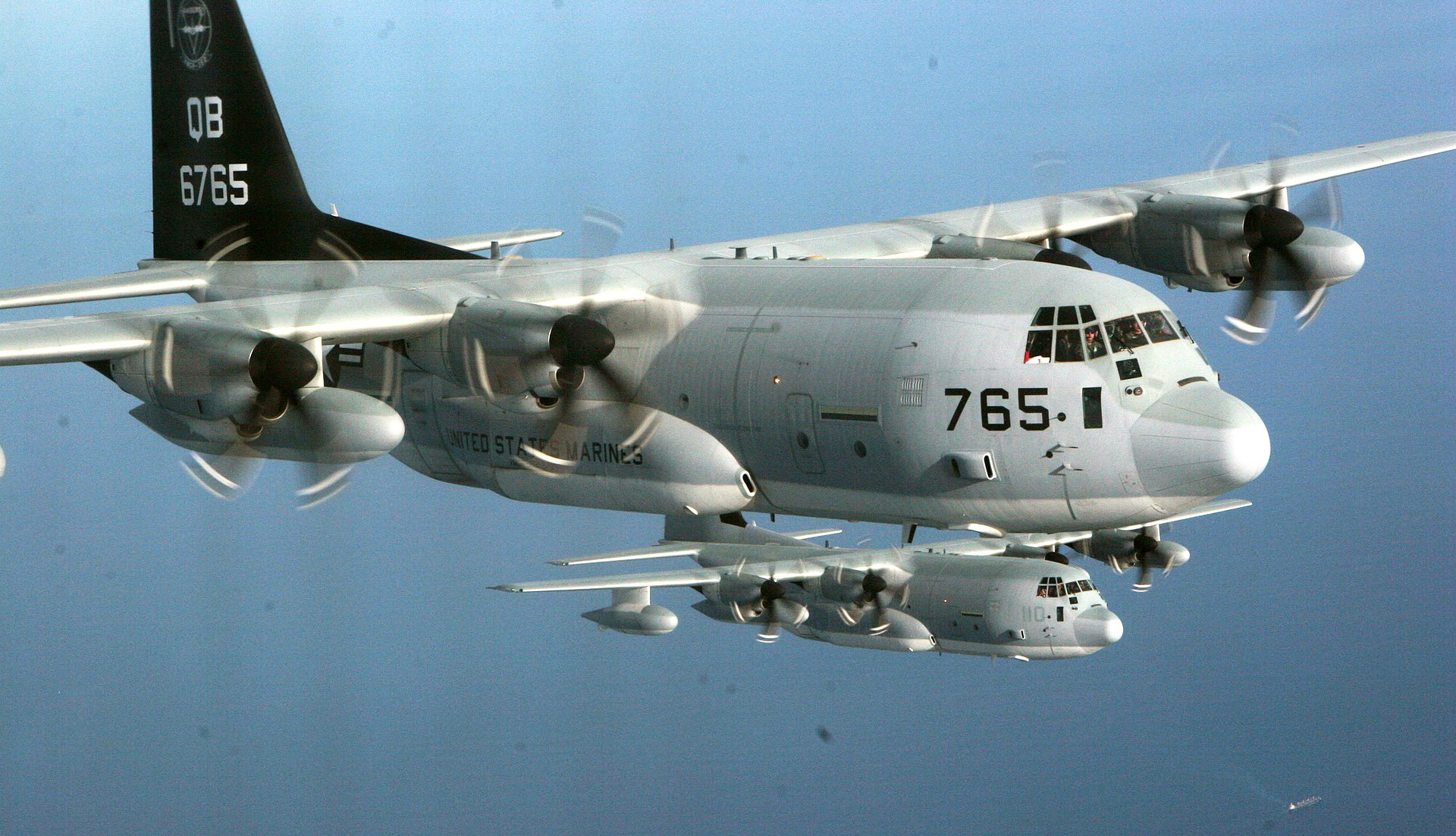
Tyler: What is it like flying a giant C-5M at the edges of the envelope? I mean that seems very intimidating. The size of that aircraft, getting it out there to where it probably isn’t too happy to be in the air.
Wayne: Yeah, we had a couple of challenges, in that sense. One of them was, you’re probably familiar with the classic T-tail deep stall problem T-tailed airplanes have. Lockheed did a real good job with designing the C-5 to be able to get out of those deep stalls. But when we put the new engines on the airplane, and just in general, the new M model on three engines has, I think, has equal to, or maybe slightly better, thrust in some scenarios, than the 4 engine A and B model C-5. That’s how much extra thrust went on the M model.
That extra thrust is below the CG [center of gravity]—trying to not get too technical—the engines are under the wing, and typically when the engines are below the CG, when you add power the nose pitches up, that’s a stable thing, and you don’t want to add power and have the airplane pitch down. So, typically, the engines are low, but with all this extra thrust, it pitched up more in the stall, and so there wasn’t enough analysis to prove that in the very deep stalls that a C-5 could get into that with high power the tail was still big enough to get out of it [the stall].
So that was this big question out there. So even though the C-5 has passed all its deep stall testing in the early days, when you hung new engines there, that question came back up again, and it fell on me. I sort of volunteered to some extent, to go look at this problem, and we ended up developing some better alerting for the pilots to prevent them from getting into the really big stalls, but we still ended up having to take it pretty much, almost in the deepest stalls and we proved that the tail was still big enough to get out of it.
It just takes a while, it won’t be close to the ground when you do it, but you do it, do a stall, and the wings stay very level, it’s a very well designed airplane from a deep stall point of view in terms of lateral directional. The wings, pretty much stay level, but you push the nose of the M (C-5M) full forward and you just start counting and very slowly, the nose comes down. So that was interesting, that was interesting.
Then, typical engine scenarios on the runway have to be tested again, where you’re going on the runway max power and you fail it, the critical engine, and you go straight with the rudder and then if you can go straight at that speed just slow down and you’ll try it again and you’ll slow down, and you’ll try it again. And you’re looking for the speed at which you really can’t quite control it. You don’t want to overshoot that speed, ’cause you can get a lot of runway deviation and risk going off the runway. So that’s always an interesting task, which I’ve done on a lot of. It’s called VMC, Minimum Control Speed ground testing. I did it all on the ‘Herc and I got a chance to do it on the C-5 as well.
You’re just looking for a speed, but you don’t wanna mess up the test, because it can be hazardous.
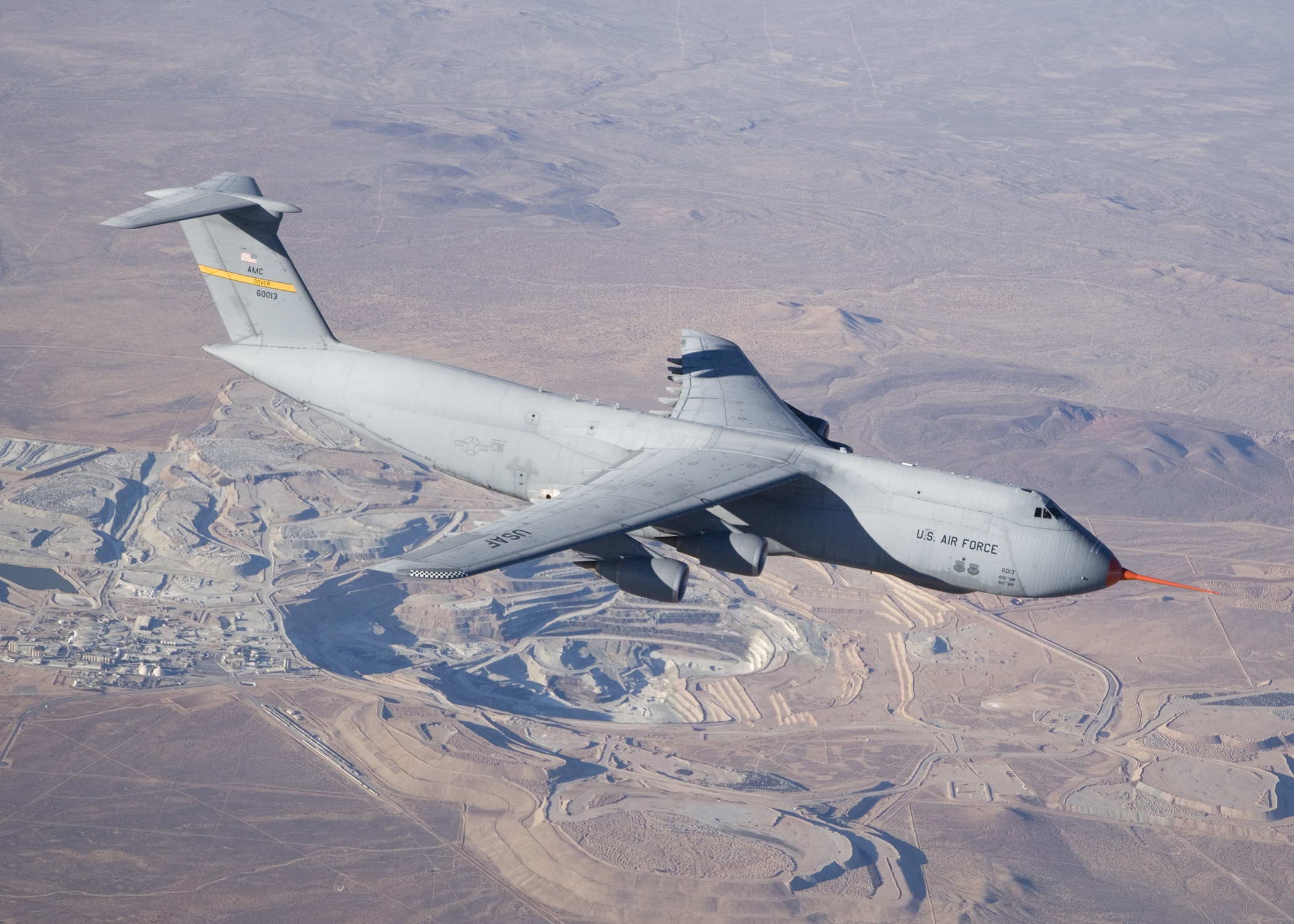
Tyler: You were a lead player in bringing the electronic surveillance variant of the S-3 Viking, the ES-3 Shadow, into existence. It seems like that capability would be highly valued today but it had a laughably short lifespan. What are your thoughts on that platform and on the status of the mothballed S-3 fleet overall?
Wayne: That’s interesting, yeah you are absolutely right. We built quite a few of them and then the Navy didn’t actually use up all the life. Again, we made a pretty good airplane that had good life, and even in the Navy carrier environment, the S-3 life did not all get used up and many of them are in the boneyard with life left… We had a number of customers, even recently, that have been interested in those S-3s, but every year that goes by they’re older and they’re probably a little less viable to bring back into service.
Maybe we missed that window, but yes it was a great airplane, and I think the Navy, when they got rid of it… I don’t know all that went into it, but there’s certainly a lot of people that questioned that decision at the time.
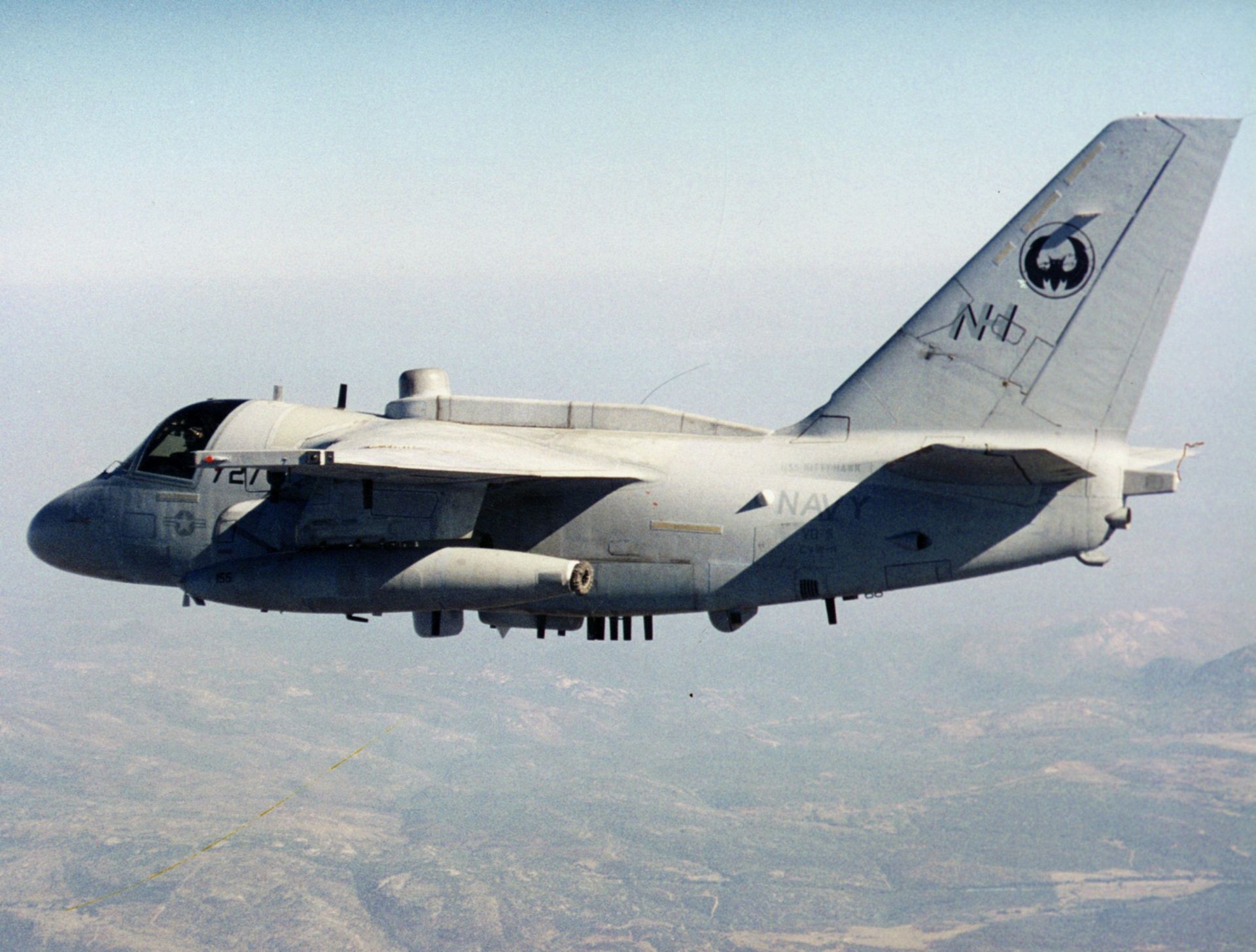
Tyler: Is there a time in all of your test pilot or military flying career that stood out as just the wildest, scariest moment in the cockpit?
Wayne: I wish that I could give you something that was really exciting, I actually think that I have been quite fortunate to not have anything particularly uncomfortable, which leads us to say that a lot of the work that goes on before the flight has been very well done by the company and by all the planners. We haven’t had anything, really, too surprising.
I guess I’ll mention one, we pioneered the development of a system called Automatic Thrust Control. We wanted to put all this extra thrust on the C-130J because more thrust makes shorter takeoffs, and heavier gross weights, and a faster airplane. But we didn’t want to change the design of the airplane in terms of a bigger tail, because that’s a whole lot of money, and cost, and drag. So we invented this system where at the lighter weights where you need to have this lower, good field performance, you have to be able to handle an engine failure at lower speeds. When one engine fails, the mission computer on the airplane automatically commands the other computer controlled engine to come back very quickly, and then programs that power automatically to accelerate again. It’s a really good system, and we certified it with the FAA.
We developed that whole system on the runway, and I did almost all that development work, and we developed it on the long airplane [C-130J-30]—we have two different length C-130s—and it worked really well, and we were happy. Then we decided to do it on the short [C-130 variant] until the analysis wasn’t all that good. We just didn’t have good engineering models from the ’50s when we had developed the airplane the first time and they’ve given me some numbers and they weren’t right and fuel-chopped the engine a bit lower than we should have… I think we got about, almost 100 feet of deviation [skidding laterally] on the runway before we got it back, so that was one time.
And the other time, I was just working with other test pilots, the younger test pilots, customer test pilots, that had gotten me into some kind of hairy situations that I’m kind of fortunate to have been paying attention and get out of. Another one on the runway, [they] flipped the throttles the wrong way and I was able to pull the throttles back at the right time and keep on the runway. Another one at a very high side-slip a low altitude that I was able to get out of. Those are three things that come to mind.

Tyler: Our final and most important question of this entire interview—what does a guy who has been doing aerobatics in C-130s for decades do in retirement?
Wayne: I’m a little scared because I don’t think it’s enough, necessarily. I’m gonna wait to see what comes about. I’ve missed out on a lot of things that I’d really like to do because I’ve been working so hard. I have a long list of things outside of flying. I think I may hang around some air shows now that I’m done with air show work, and see what I might be able to do. But I have no specific plans when it comes to flying, I’m gonna kind of see what comes along.
I mean I got all kinds of thoughts about what to do. I’m gonna go get my seaplane rating, it’s the only thing I can think of I don’t have, is the seaplane rating. I’ve flown helicopters, and gliders, and fighters, but I don’t have a seaplane rating. So that’s one of the first things I’m gonna go do!
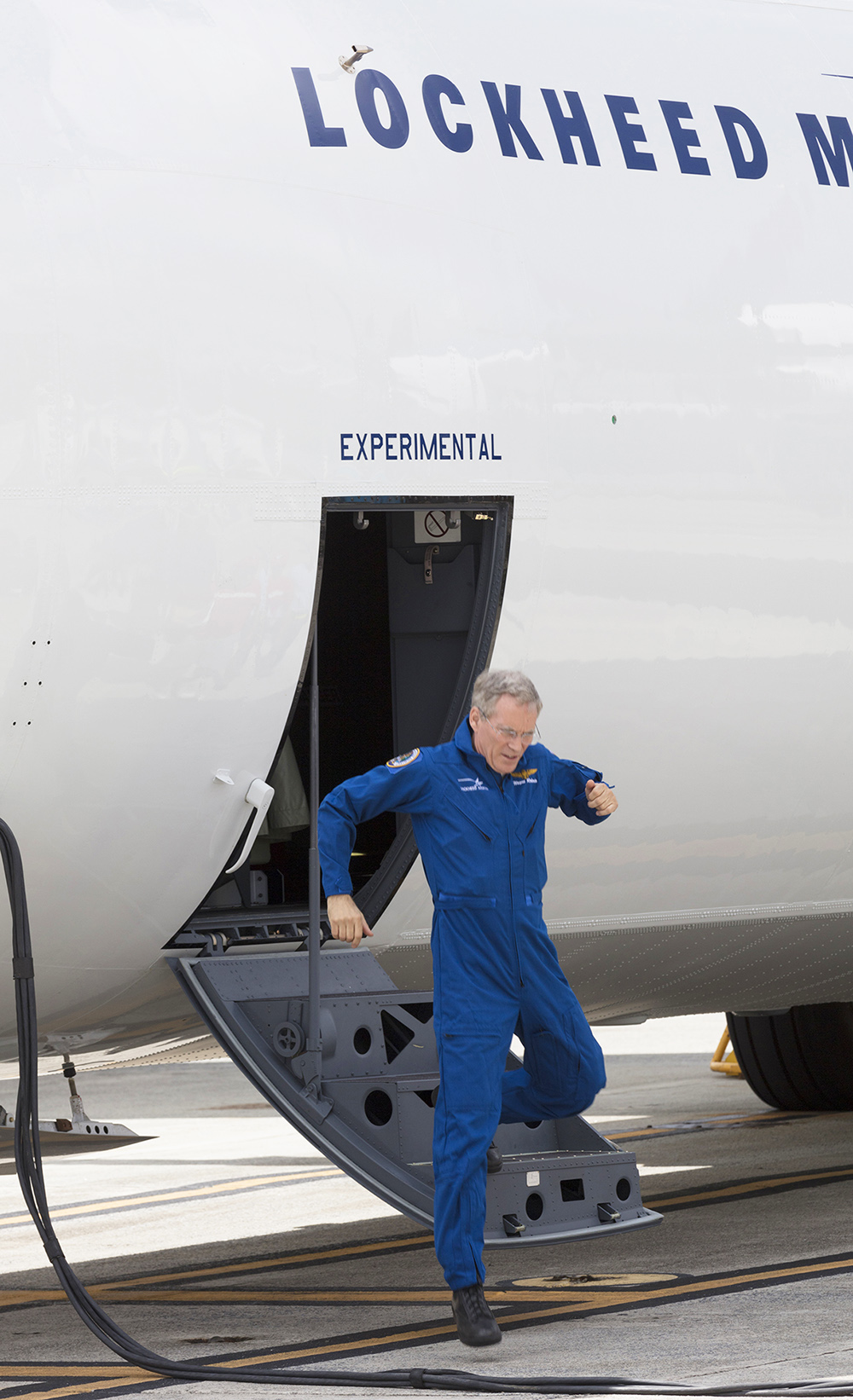
I want to give a huge thanks to Wayne Roberts for taking the time to talk so in-depth with us, as well as to Tony Frese. We wish Wayne the very best with his new-found freedom in retirement. But above all else, I want to give a very special thanks to Stephanie Stinn, Communications Program Manager for C-130. Getting everyone together and executing something like this isn’t easy, but Stephanie made it seem like it was. These three love their product and it really shows.
Contact the author: Tyler@thedrive.com
